This has been an extremely long and emotional week. Last weekend it appeared my youngest rescue dog, Casper, had a severe stroke. I could tell he’d not been feeling well for some time and would occasionally go into “frozen statue” mode when walking around outside. It would only last a minute or two. But this latest seizure-like experience appeared more serious. So on Monday morning I called the veterinarian and made an appointment to have things checked out. The next day I dropped him off for the exam. It only took a couple of hours to get the phone call and terminal diagnosis.
When I went back to pick up Casper, the veterinarian confirmed that Casper had a large splenic tumor. It was surrounding his spleen and invading the liver. Surgery was not a good option due to potential heavy bleeding and medications would not cure it. The cancerous tumor was growing and had been for some time. His side abdomen was notably enlarged. Casper was terminal and had days, maybe weeks, to live.
Meanwhile, the vet said, although Casper didn’t appear to be in any pain, his quality of life would soon deteriorate. And although Casper exhibited moments of energy outside and active movement around the house and yard during the day, it was followed by long naps and lethargy. He had already stopped drinking his usual water, and exhibited loss of appetite and reduced weight. The vet said it was likely he could die suddenly in his sleep at any time.
I made a euthanasia appointment; the soonest opening was in three days. My tears have been flowing since I got that initial phone call from the vet. They still  leak down my face and cloud my eyes every time I get near Casper or stroke his fine, white hair-like fur.
leak down my face and cloud my eyes every time I get near Casper or stroke his fine, white hair-like fur.
Casper’s early life (before me) was one of being caged and drugged. When he was rescued by a group at two years old, they had to wean him off of three doggy-downer drugs before he was eligible for adoption. After reading his bio and seeing his photo, I knew he was the dog for me. We brought him home on Halloween 2016. A trick and a treat for us!
I wanted him to experience love and family for as long as I could. I’ve done that. We adopted Zoey the same day. I wanted Casper to learn how to be a house dog, but be taught by a smaller breed. Casper is Schnauzer/Bichon Frisé (22 lbs. and almost eleven years old) and Zoey is Schnauzer/Westie Terrier (at 9 lbs. and fifteen years old). There haven’t been too many fights between them. Zoey is still the boss.
It took almost a year before Casper would actually come to me when I called him. I worked hard to build trust between us. While aloof in nature, eventually, Casper became my buddy and protector. He still follows me from room to room or checks on me throughout the day. Several folks (mostly family members) have been nipped by him through the years when getting too close to me or surprising him with their quick movements. I’ve always had to keep him away from any guests at our house – for the wellbeing of everyone.
From the very first weekend we brought the dogs home, we discovered Casper was a runner. Fortunately, we’ve been able to track him down, bring him home, and create better security each time. His last escape was the week we moved to Oregon when he jerked his leash from my hand and decided to saunter down the four-lane highway in Coos Bay! Lucky for him (and us) the traffic slowed and stopped and laughed at him, and us as we ran after him, trying to recapture our wayward pet. THAT was a scary experience! Since our return to Colorado, he’s enjoyed our securely fenced backyard and occasional van trips to the vet.
It is now the third day since we were given Casper’s diagnosis. This period of release over the past few days – this long good-bye – has been a blessing and also a very difficult time.
On the blessing side, we’ve been able to take a family photo, a video, share quiet moments of love and extra kindnesses, and allow ourselves to grieve before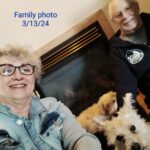 Casper’s transition. Our previous dogs all died so suddenly, we were left only with shock and sorrow. I want to be fully present for Casper in his final moments with us. We want Zoey to be there, too. I have no doubt that she will join him in the next year or two.
Casper’s transition. Our previous dogs all died so suddenly, we were left only with shock and sorrow. I want to be fully present for Casper in his final moments with us. We want Zoey to be there, too. I have no doubt that she will join him in the next year or two.
I have many photos of all our dogs, but more of Casper and Zoey than the others. They’ve grown older in the digital camera/phone era; it’s just easier to take pictures. Today I also made sure to snip a bit of Casper’s beautiful white hair/fur. Both pups have been treated to special “soft” food all week, especially today, and I’ve showered them with more hugs, soft strokes, and kisses than ever before. They have been brother/sister for more than eight years and have rarely spent a moment apart in all that time. I’m already thinking about what I can do to be here for Zoey as she wanders the house in confusion, looking for her absent barking partner.
The difficulty in having all this time before he’s gone has to do with my own self-doubt. Could I have prevented the tumor? Why didn’t we know sooner? Would the prognosis have been different? Does Casper know how much I loved him? (An internet search told me that dogs do know love – giving and receiving.) Am I saving him from additional pain? I hope so. While death is part of Life, and the experience is familiar, it is not any easier than the previous times. I started the grief process days ago. It has been deep and painful, yet it is already changing. We are remembering his antics and challenges and dedication to our family. 
This afternoon Casper will cross the Rainbow Bridge. I want to think that our previous dogs – Sparky, Zeus, Xena, and Zelda – will greet him there. Like them, Casper has had a loving home and a good life. And he will remain in our hearts for years to come.
# # #


 (with solar-powered lights) that I can plant in the spring. Food. Silence. Songs. Laughter. Donations to those struggling. Prayer and meditation, and gratitude for life’s continuing abundance. I think Winter Solstice is a good day to express all this and more.
(with solar-powered lights) that I can plant in the spring. Food. Silence. Songs. Laughter. Donations to those struggling. Prayer and meditation, and gratitude for life’s continuing abundance. I think Winter Solstice is a good day to express all this and more.

 in mind. I’m getting estimates for someone else to do the front yard landscaping project. I continue to collect paint chip samples for the rooms and cabinets still needing work. I’m creating a list of house repairs to be done by professionals. I’ve acquiesced to having my husband drive the car when we need to go somewhere together. I take breaks from chores more often, too.
in mind. I’m getting estimates for someone else to do the front yard landscaping project. I continue to collect paint chip samples for the rooms and cabinets still needing work. I’m creating a list of house repairs to be done by professionals. I’ve acquiesced to having my husband drive the car when we need to go somewhere together. I take breaks from chores more often, too.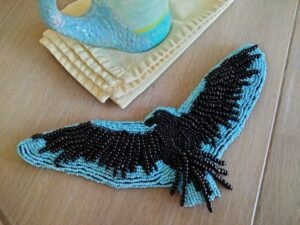



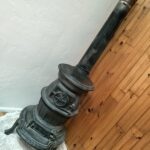
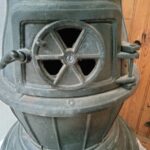
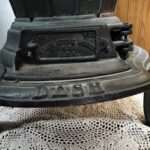

 street. This has resulted in meeting new folks, developing an exercise routine, and feeling more energetic. I joined a virtual walking challenge community and have been racking up miles more than I ever thought I would. I’ve changed what I eat and am noticing the difference in how my body reacts. Room for improvement? Of course, all ways and always!
street. This has resulted in meeting new folks, developing an exercise routine, and feeling more energetic. I joined a virtual walking challenge community and have been racking up miles more than I ever thought I would. I’ve changed what I eat and am noticing the difference in how my body reacts. Room for improvement? Of course, all ways and always!